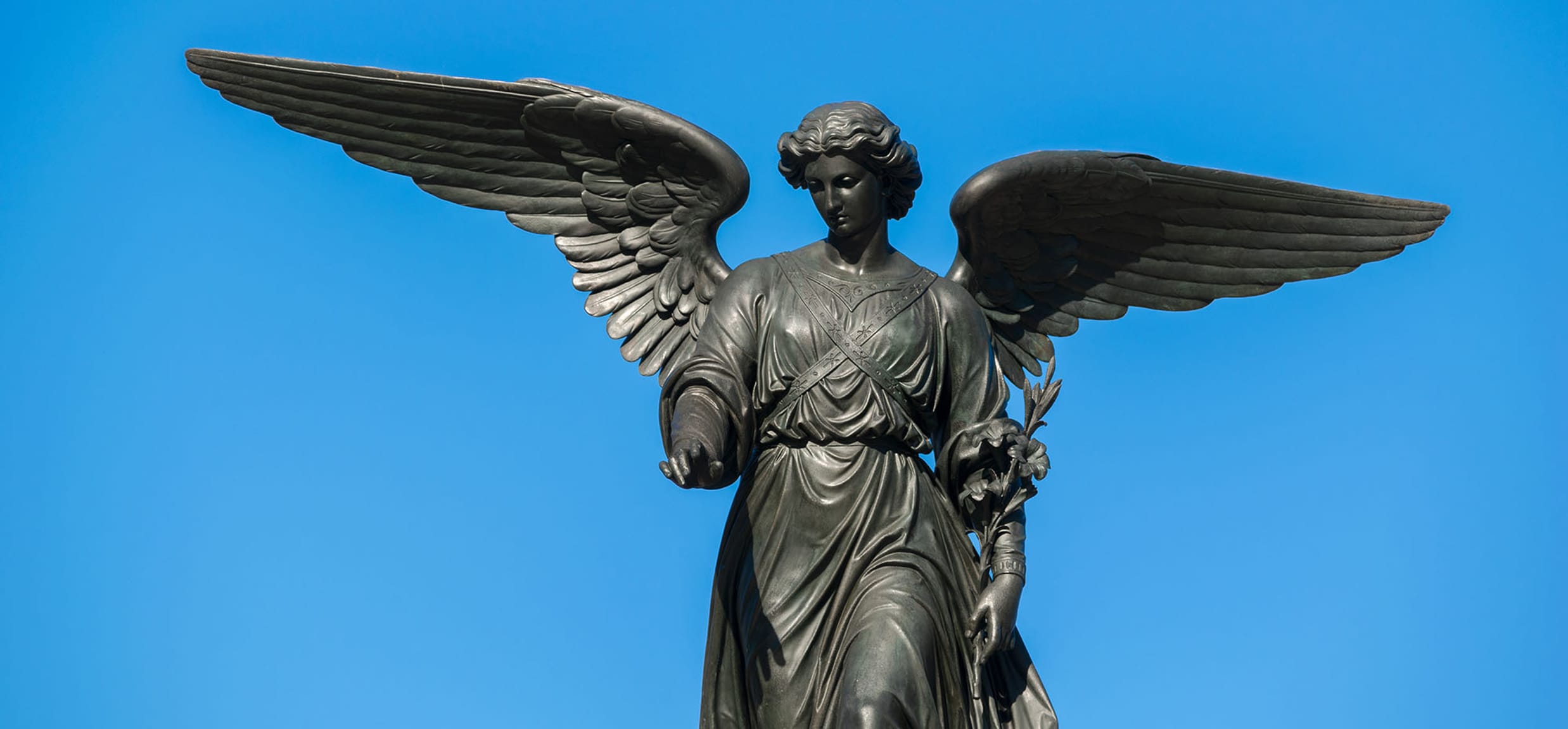Magazine
A Look at LGBTQ+ History in Central Park

Public spaces have always been a focal point for social change, and Central Park is no exception. The Park has a long and storied history with the LGBTQ+ community, starting with the commission of Bethesda Fountain, cast and dedicated in 1873 (and the only sculpture sanctioned as a part of the Park’s early design). The Park Commission directed that the sculpture be dedicated to “Love,” an instruction that sculptor Emma Stebbins may have handled liberally. It's speculated that she modeled Angel of the Waters after her lover, Charlotte Cushman, a leading American actress. At the fountain’s dedication, she shared a pamphlet that spoke of the Angel as a healer. The statue was the earliest public artwork by a woman in New York City.

A detail of Angel of the Waters at Bethesda Terrace.
Stepping into the public eye
On the first anniversary of the 1969 Stonewall Riots, a march set out from Greenwich Village toward Central Park, culminating in a “gay-in” at Sheep Meadow. Organizers were surprised to see thousands of people turn out to protest anti-gay sentiment and promote gay pride during what was then called the Christopher Street Liberation Day March. It was the first time that gay and lesbian people had taken to the streets for a public display of solidarity, community, and support.

Photo by Diana Davies. Courtesy of the Manuscripts and Archives Division, The New York Public Library
The march became an annual event, growing each year and becoming more effectively organized. For two decades, the parade route involved Central Park. Then about 20 years ago, a new route emerged with the march concluding in the historically gay Greenwich Village neighborhood. It continues today as the Pride March.
Saving the Central Park landscape
By the 1980s, most of Central Park had been abandoned and fallen into disrepair. Both the land and the Park’s structures were in desperate need of restoration. It was at this time that the Central Park Conservancy was born, as concerned citizens joined together to save the Park. Two of the landscape architects who became integral to revitalization efforts—Philip N. Winslow and Bruce Kelly—also happened to be gay. Both men, whose contributions to the Conservancy and the Park were invaluable, tragically succumbed to AIDS during the height of national crisis.
Philip N. Winslow is credited with designing the landscape restoration of Bethesda Terrace, the Mall, Cherry Hill, and the Point on the Lake. He was also the landscape architectural consultant for the Central Park Zoo. Along with Kelly and others, he co-authored Rebuilding Central Park: A Management and Restoration Plan in 1985.

Philip N. Winslow (left); and Bruce Kelly, pictured in Central Park.
Bruce Kelly gained some public recognition for his role as architect of Strawberry Fields, the “International Garden of Peace” donated by Yoko Ono in memory of her late husband, musician John Lennon. Behind the scenes, Kelly had been a consultant with the Central Park Task Force (which later became the Conservancy) for many years, and his expertise was extremely influential. He became one of the first people hired by the nascent Task Force as it gained funding; he went on to pilot the renovation of Shakespeare Garden and part of the Ramble, and drew plans to expand Turtle Pond and rebuild the Great Lawn. His book, Art of the Olmsted Landscape, is regarded as a leading scholarly text.
“It was Bruce who improved my own Olmstedian eye on our many walks in different sections of the park,” wrote Betsy Barlow Rogers, founder of the Conservancy, in her book Saving Central Park.
Both men died in their 40s—Winslow in 1989 at age 48, and Kelly in 1993 at age 44.
The fight of a generation
During that time, AIDS activism was at its peak, and Central Park served as a stage to several demonstrations. In 1989, activists unfurled thousands of panels of the AIDS Memorial Quilt on the Great Lawn, reading out the names of countless victims of the disease. It was part of a campaign that began in 1987 to raise awareness of the pandemic and fund AIDS research. After they were displayed on the Great Lawn, the quilt panels were sent to San Francisco and combined with another piece. The AIDS Memorial Quilt is now the largest piece of folk art on Earth, with over 48,000 individual panels.

Photo courtesy of the NYC Parks Photo Archive
For over 30 years now, AIDS Walk New York, the largest single-day AIDS fundraising event in the world, has taken place in Central Park each year in May. The walk has inspired nearly 890,000 people to raise more than $150 million to combat HIV and AIDS, and the work continues.
Living with pride
Central Park is a park for the people of New York City. We are honored to have been a part of the early Pride March protests, and we continue to celebrate the LGBTQ+ community as an integral part of our city and our world. The Park is made richer by the diversity that flows through its gates every day, and at 843 acres, there’s a place here for every kind of person to enjoy some peace in nature.



